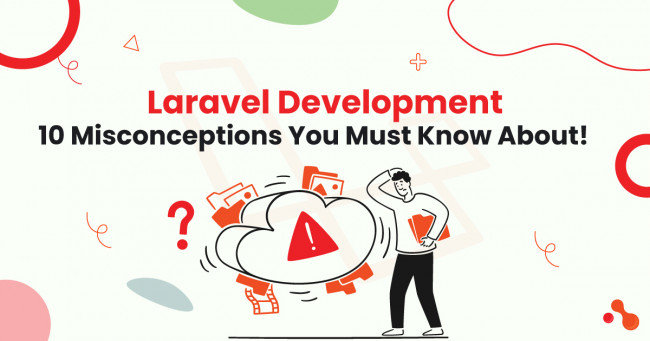
Background
Families with children who have attention deficit hyperactivity disorder (ADHD) report having more negative relationships in their family than families without ADHD. There are still questions about the genetic factors that underlie the associations between family relations and children's ADHD, as well as the influence of ADHD symptoms. Utilizing the attributes of two genetically sensitive research designs, the present study examined associations between biologically related and non-biologically related maternal ADHD symptoms, parenting practices, child impulsivity, activation, and child ADHD symptoms. The study designs allow assessing associations by controlling passive genotype-environment correlation and directly examining evocative genetic-environment correlates.
Methods
A cross-sectional adoption-at-conception design (Cardiff IVF Study; C-IVF) and a longitudinal adoption-at-birth design (Early Growth and Development Study; EGDS) were used. The C-IVF study sample comprised 160 mothers and their children (aged 5-8 years). The EGDS included 320 sets of linked adopted children (age six years), biologically and adoptively related mothers, and adoptive Questionnaires were used to assess maternal ADHD symptoms, parenting practices, child impulsivity and activation, and child ADHD symptoms. The father's reports were used to cross-rate maternal behavior and child ADHD symptoms.
Results
In both samples, significant associations were found between the mother's ADHD symptoms, hostile parenting behaviors, and the child's ADHD symptoms. Because both pieces consisted of genetically unrelated mothers and children, passive rGE was removed as a possible explanatory factor underlying these associations. Further, path analysis revealed evidence for evocative rGE processes in the longitudinal adoption-at-birth study (EGDS) from biologically-related maternal ADHD symptoms to biologically-unrelated maternal hostile parenting through early disrupted child behavior (impulsivity/activation), with hostile maternal parenting and disrupted child behavior associated with later child ADHD symptoms, controlling for concurrent adoptive mother ADHD symptoms.
The Developmental Interface Between Nature and Nurture: A Review of the Biological and Rearing Mother Influences on Child ADHD Symptoms
It is well known that Attention Deficit/Hyperactivity Disorder (ADHD) is highly heritable, whether it is defined like all psychopathology. However, non-inherited causes also play a role (Lifford). Harold & Thapar 2009 HTML It has been challenging to determine which environmental factors are causally responsible for ADHD symptoms (Thapar, Elam, Lewis, Rice). Families and, in particular, hostile parenting are associated with different types of psychopathology. ( Harold, It is unclear, however, whether certain family conditions, such as hostile parenting, have a dangerous or worsening effect on ADHD. Two primaries The association between family relationships and ADHD symptoms in children may be explained first by the genes that parents share with their biologically related children. This relationship could be explained by the fact that child ADHD symptoms affect family relationships, not vice versa. Few studies have used research designs that allow genetic and environmental factors to be effectively separated. This allows for examining child-on-parent effects (re This study utilizes data from two novel genetically sensitive methods to improve understanding of the interaction between mother-child interactions and child ADHD symptoms.
Families can have a significant impact on the symptoms of ADHD in children.
Multiple research designs have shown that genetic and familyHTML 0). relationships influence the course of ADHD symptoms in children. These include classic twin designs (Burthe009; The association between hostile parent-child relations and ADHD symptoms has been shown in clinical and pop studies). Studies. This includes longitudinal and treatment studies (see HTML0 Treatment and longitudinal studies, however, have demonstrated that hostile parent-child relations can also result from ADHD symptoms in children. ( Few studies have been conducted in this field considering child-on-parent effects and control for inherited confounders. A series of studies using a quasi-experimental approach with children in a Romanian orphanage found that extreme but rare forms of adversity were associated with an increased risk of ADHD symptoms and pseudo-autistic traits (Stevens, Sonuga Barke, Asherson, Kreppner, & Rutter 2006).
Most research conducted on the influence of family relationships on childhood outcomes is done with biologically related mothers and children. These studies, however, make it difficult to determine whether the associations between family-level factors (e.g., parenting) and child outcomes (e.g., ADHD) are due to shared genetic influences or environmental effects (Plomin, DeFries, & Loehlin, 1977). In biological families, the association between a parent's characteristics and their child's characteristics could be due to shared genetic factors, which influence both parent and child traits. This means that genes can affect not only the index of psychopathology (e.g., ADHD) but also the environment in which children are raised (e.g., parenting practices). This overlap in influence is known as genotype-environment correlation (GE).
Traditional Approaches for Examining Genotype-Environment Correlation
In past research, the passive and evocative rGE were highlighted using twin designs (Horwitz & Neiderhiser, 2011) and, a variant thereof, the children-of-twins design (D'Onofrio, 2005). Some studies have suggested that the passive rGE does not explain associations between parenting characteristics and adolescent antisocial behaviors (Caspi et al., 2004). In most genetically informed studies, however, passive GE is not ruled out, especially in parenting behaviors and child adjustment. Examining evocative rGE has been facilitated by longitudinal designs where genetically-influenced twin behaviors predict later parenting. This design has shown evocative effects between mothers' hostile parenting and toddlers' temperament and behavior (Forget Dubois and colleagues, 2007). Twin studies of older children or adolescents have also found evidence of passive and evocative effects that underlie associations between family relationship patterns and child outcomes.
CoT and extended CoT designs provide evidence of passive and evocative rGE. One study identified an environmental component in harsh punishments as having a causal relationship to child externalizing behaviors (Lynch et al., 2006). In addition, evocative rGE is present in adolescent samples between internalizing problems of the adolescent and excessive maternal emotion (Narusyte et al., 2008) and externalizing behaviors of the adolescent and criticism from mothers (Narusyte et al., 2011). The twin study and its derivatives provide essential insights into the relative roles of passive and evocative parenting and child behavior. Twin studies rely on genetically related samples of parents and their children. Estimating the genetic and environmental contributions underlying this association is possible. However, it is not possible to separate genetic and non-genetic factors.
Natural Experimental Research Designs: Benefits and Uses
Understanding the relationship between family interactions and child development can be improved by using research designs that allow the separation of passive rGE and family relationships and child outcomes associations and that permit examination of evocative rGE. Two complementary study design options accommodate this unique opportunity. The first study is an adoption-at-birth design with a sample of families with domestic infant adoptions; the second study is an adoption-at-conception design using a sample of families with children conceived through in vitro fertilization (IVF). Both studies provide an opportunity to examine the interaction between family relationships and child outcomes while controlling the confounding effect of passive rGE. The former study allows for the examination of the evocative rGE process.
The genetic relationship of children conceived through assisted reproductive technology can be between both parents (homologous), only the mother (sperm donation), only the father (egg donation), or neither parent (embryo donor). There is a third category where both parents have a genetic relationship with the child, but an unrelated surrogate provides the intrauterine environment of the baby. The current study focuses on mothers genetically unrelated to their offspring (egg and embryo donation). It, therefore, constitutes an adoption-at-conception design because rearing mothers undergo gamete "adoption" prenatally.
The present study
The present study examined associations between maternal hostility and child ADHD symptoms using a cross-sectional, rearing mother-focused adoption-at-conception design (the Cardiff IVF Study; C-IVF) and a longitudinal adoption-at-birth design (the Early Growth and Development Study; EGDS). The initial analyses examined associations between maternal hostility, child ADHD symptoms, and raising a mother with ADHD using both study designs. Passive and were controlled in all analyses. Additional analyses using the longitudinal EGDS adoption-at-birth design examined the role of biological mother ADHD symptoms on biologically related child behavior problems (impulsivity and activation; consonant with early ADHD type behaviors) at age 4.5 years and the role of child impulsivity and activation on child ADHD symptoms at age six years, controlling for concurrent rearing (adoptive) mother ADHD symptoms.
















